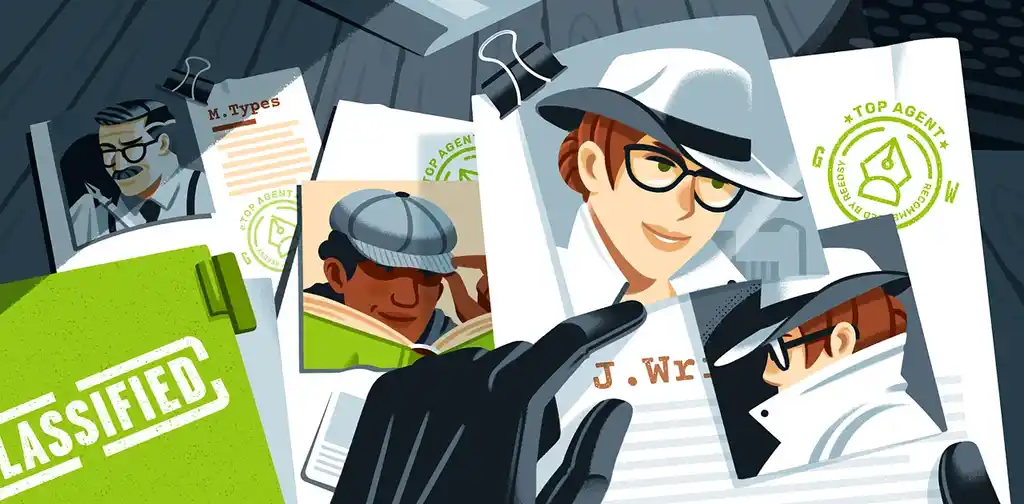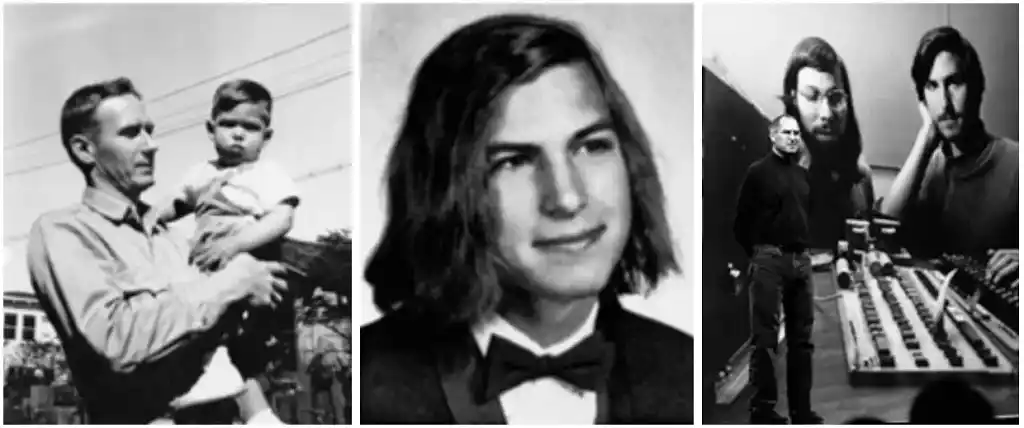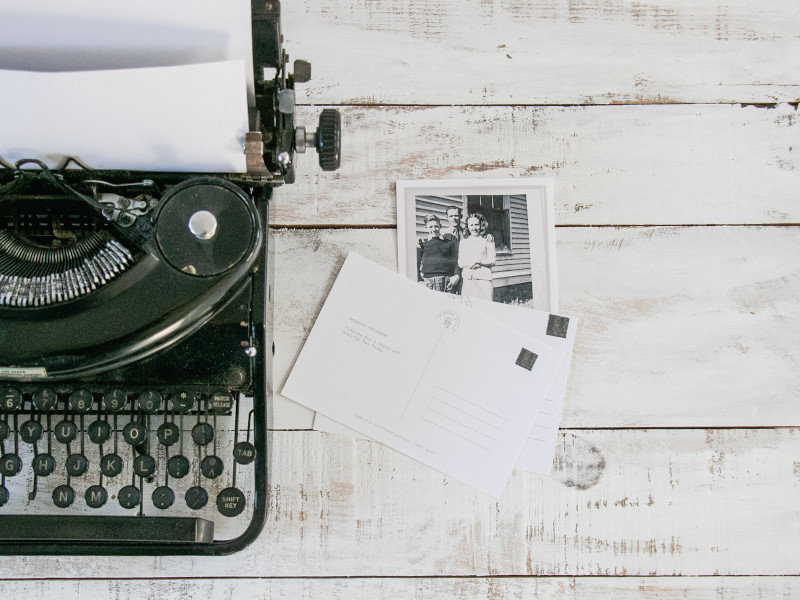How to Write an Award-Worthy Autobiography in 5 Steps


Savannah Cordova

Table of Contents
1. make a list of life events, 2. try to recall all the details of each one, 3. write chronologically from your birth (or earlier), 4. weave in the wisdom of your older self, 5. wrap things up on a contemplative note.
An autobiography, in the simplest terms, is a full account of your life that you write yourself. Many of us have read great memoirs in recent years—bestsellers like Educated and Crying in H Mart —but autobiographies, specifically, are more elusive than you might think.
This is because a true autobiography contains every detail you could possibly include about your life, in chronological order. A memoir, on the other hand, revolves around a particular theme or time period in someone’s life, describing only select memories in service of this goal.
So, if what you’re really after is advice on how to write a memoir, I’d recommend this “memoir method” post from Joe Bunting . But if you’re ready to lay out the entire story of your life—warts and all—read on for how to write an autobiography in five (relatively) simple steps.
Since an autobiography must be comprehensive, you can start by listing out all the events that your book will include—that is, every major event of your life (and some minor ones too!).
The earliest events might be your birth, the birth of any siblings, starting school, and coming to realize aspects of your personality and long-term interests that emerged in childhood. The “middle” events might include finishing school, attending college and/or getting your first job, and the advent of any significant relationships—both friendships and romantic relationships. The later-in-life events might include pursuing any other big jobs or degrees, getting married and/or having children, moving house, starting major hobbies, and perhaps even retiring and planning for your “golden years.”
Again, be sure to include all the important events in your career or in your personal life. Obviously, anything that changed the trajectory of your life should be added to the list. However, the nature of each event will depend completely on who you are and how your life has unfolded.
Indeed, going back to the idea of including “minor” events, it may be that some pivotal moments in your life could seem “minor” from an outside perspective. For example, say that one day you happened to spot an unusually shaped cloud, and it caused you to have a revelation about your life and change course somehow. The revelation is the key thing, but don’t leave out the circumstances that led you to it—no matter how irrelevant they might seem.
To be fair, it can be tough to remember every event of importance, especially when some of them happened a long time ago. In that vein, take your time to make this list before you get into actually writing the book. It should take at least a few hours (if not a day or two) to outline everything to include in your autobiography.
If you thought you were done after simply listing out those events, think again. Not to sound like a broken record, but this process is all about being thorough; in order to succeed, you need a solid foundation from which to work. So now, at this next stage, try to remember everything about the initial events you’ve listed.
Say that the average person has around 40 to 50 major life events or pivotal moments to write about in their autobiography. (If you have fewer than that, you may want to reconsider whether you’re really ready to write the whole story of your life —perhaps a memoir would better suit your purposes.) Now, brace yourself: before you start writing, you should put together at least half a page of notes on each of these points.
Sure, some events will warrant more detail than others. But this should still average out to around 20 to 30 pages to serve as the aforementioned foundation for your autobiography. And how should you expand on these events, you might ask—that is, which details should you focus on to ensure your “foundation” is truly useful?
Here are a few questions to jog your memory and help you identify what’s most important:
Which sensory details (still) stand out the most? That is, not just how each scene looked, but how it felt at the time, to the best of your recollection. For example, if you’re recounting the experience of starting school, don’t just say what your elementary school building looked like. Instead, talk about the fragrant leaves on the ground or the chill in the September air; the sounds of birds chirping and parents chatting at early morning drop-off; that first week when you skinned your knee on the playground; etc.
What were the people around you saying? Speaking of chatting, you’ll also need to recreate important “dialogue” in some scenes, just as you would when writing a novel . While you can’t take quite as many liberties as in a work of fiction, you are allowed to paraphrase what you can’t remember precisely. At this stage, just record the gist of whatever was said—you can finesse the details later.
Why was this moment important? Make sure to identify in your notes why each event or moment was so important. For many of the classic “life milestones,” it will be obvious. But try to dig deeper into exactly how each event affected you… even if you didn’t realize it at the time. Articulating this will make your autobiography all the better, allowing you to segue more smoothly between events and draw more resounding conclusions about your life.
Having written up these extremely detailed notes—basically an FBI dossier on yourself—you’re now ready to start drafting your autobiography.
You may have jotted down your notes in any order; indeed, you probably jumped around randomly as different memories came back to you. However, now that it’s time to actually write your autobiography, you should try to write it chronologically.
Why? Because if you want to refer to something that happened “in the past,” it’s best to know how you presented it to readers in earlier chapters. In an autobiography—as in life—each event depends on what came before it. If you jump around while writing, your autobiography could end up feeling messy and uneven, and you risk leaving out important elements simply because you skipped them on the list.
So as you draft, do it in order of events. Begin with the first life event on your list—likely your birth—or go back even further, if you wish. Many of the greatest autobiographies of the 20th century, like Lee Iacocca’s self-titled book and Nelson Mandela’s Long Walk to Freedom, begin not with themselves, but instead with their family history. Mandela’s book technically opens with the meaning of his name, but he then doubles back to describe his father and the history of his tribe, the Thembu people. And Iacocca’s autobiography begins not just with his father, but his grandfather arriving in America.
In summary: while your birth is a tried-and-true starting point, you’re allowed to briefly touch on your parents and/or family history first. That said, once you’ve established these elements, it’s time to get down to brass tacks. Dive into writing about your life, and try not to deviate from the chronology—no more family history, flashbacks, flash-forwards, or anything else that will distract you or your reader. You can still keep things interesting and “readable” by using those elements we discussed: sensory details, dialogue, and organic transitions between events.
And if you happen to remember something that would work well in a different part of the book, don’t switch gears to that part right now. Instead, just jot it down in your notes and come back to it later. You want to preserve the “flow” of writing chronologically—otherwise, again, you risk choppy prose and a subpar reading experience.
Of course, just because you’re writing chronologically, that doesn’t mean your insights in each section should be limited to the knowledge of your past self. On the contrary, one of the most valuable elements of an autobiography is the injection of present-day reflection and wisdom. Without this extra layer, your autobiography could be written by anyone .
So this is where you’ll incorporate those previous answers to the question of: “Why was this moment important?” Here’s a great example of “wisdom weaving” in the early pages of Mandela’s autobiography:
“I learned my lesson one day from an unruly donkey. We had been taking turns climbing up and down its back, and when my chance came, I jumped on and the donkey bolted into a nearby thornbush. It bent its head, trying to unseat me, which it did, but not before the thorns had pricked and scratched my face, embarrassing me in front of my friends [...]
“Even though it was a donkey that unseated me, I learned that to humiliate another person is to make him suffer an unnecessarily cruel fate. Even as a boy, I defeated my opponents without dishonoring them.”
While the younger Mandela may not have been able to articulate (or even consciously identify) this lesson, the older Mandela understands it as a crucial moment for his moral development. Yet he explains it so smoothly that it does not take the reader out of the narrative at all—only paints a more detailed picture of the boy and man he would become.
As you’re trying to inject some wisdom of your own, here are some more thought-provoking questions to ask yourself:
How did I feel about this at the time, and how do I feel about it now?
Can I draw parallels between events at different times in my life?
How have I affected the people around me, and how have they changed me?
Is there anything I wish I’d done differently?
What do I want readers to take away from this?
If you’re struggling to articulate what something meant to you—even if you know it was important—running through these questions might help you out. Sometimes your takeaway will be a simple moral lesson; other times, it will be a more complex tangle of emotions.
Whatever you discover about yourself, don’t shy away from putting it down on the page. Your autobiography is the place to be clear-eyed and candid. If you’re not telling the truth, the whole truth, and nothing but the truth about your life, there’s little point to writing this book at all.
As your autobiography draws to a close, you may find yourself struggling with how to end it, especially if you are still relatively young. But rather than trying to fight that feeling, the best strategy is to lean into the uncertainty and end on a note of contemplation.
Consider the following: How do you feel having completed your autobiography? What’s next for you? What are you most looking forward to—or, indeed, dreading? How will you use the lessons you’ve learned to tackle the rest of your life? Will you be writing multiple autobiographical volumes, à la Karl Ove Knausgård?
You might think the answers to these questions are best left off the page. But if we’ve established anything over the course of this guide, it’s that an autobiography should strive for comprehensiveness.
On that note, remember that it doesn’t matter if you don’t have it all figured out or if you’re unsure of what’s next. Once again: Just lay it all out on the page. Readers will appreciate your honesty, and you’ll feel much more satisfied with the final result.
Speaking of which: if you really want to write a satisfying autobiography, but feel intimidated by the lengthy process, consider working with a ghostwriter to get your story on the page. What’s great about this kind of project is that you can involve another writer as much or as little as you want. They might simply advise on structure and chip in to edit the occasional chapter—or they can conduct in-depth interviews with you and take on the lion’s share of writing. Basically, your main goal is to get your autobiography out there, and a ghostwriter can (and will) help you out.
You can also use autobiography-specific editing tools to get your draft into tip-top shape. ProWritingAid is particularly useful for elevating those sensory details we talked about, with the help of its Sensory Report. You can also use ProWritingAid to improve your pacing, sentence structure, and other elements that will turn your autobiography from good to great—not just great like “better than good,” but like Mandela-level great.
Sure, it might sound like a tall order, especially for the novice writers out there. Yet with enough time and effort (and the tips in this article), you’ll find that anyone can write an autobiography—one that not only captures their life story, but also engages readers in a profound way. If you’re willing to put in the hours, your own story could be next. Good luck!

Write like a bestselling author
Love writing? ProWritingAid will help you improve the style, strength, and clarity of your stories.
Get started with ProWritingAid
Drop us a line or let's stay in touch via:
Looking to publish? Meet your dream editor, designer and marketer on Reedsy.
Find the perfect editor for your next book
1 million authors trust the professionals on Reedsy. Come meet them.
Blog • Perfecting your Craft
Posted on Jun 05, 2024
How to Write an Autobiography: The Story of Your Life
About the author.
Reedsy's editorial team is a diverse group of industry experts devoted to helping authors write and publish beautiful books.
About Dario Villirilli
Editor-in-Chief of the Reedsy blog, Dario is a graduate of Mälardalen University. As a freelance writer, he has written for many esteemed outlets aimed at writers. A traveler at heart, he can be found roaming the world and working from his laptop.
Anyone who’s lived a long, interesting life (as many of us have in one way or another!) may dream of someday turning their life into a book. However, the practicalities of how to write an autobiography can be daunting — especially to those who don’t have much writing experience.
If you feel ready to write your autobiography but aren’t sure where to start, this guide will take you from opening lines to (hopefully) publishing your autobiography for all the world to read.
1. Understand what an autobiography entails
When asked to picture an autobiography, you might think of a celebrity tell-all or political memoir. This isn’t inaccurate ; a memoir would definitely fall under the autobiography umbrella. But to be really precise, there are a few key differences between memoirs and autobiographies:
- Memoirs tend to be more thematic and focus on a central narrative (similar to a novel), whereas an autobiography is highly factual and reads more like “classic” nonfiction.
- Memoirs focus on a specific period or theme in a person’s life, while autobiographies aim to give a complete, chronological picture.
- Lastly, many memoirs are written while the writer is still young. An autobiography, though, should be written later in one’s life — at a point where one’s life story can be told comprehensively.
An autobiography is also different from a biography in that it is always narrated by the subject. Note that we’ve said “narrated” instead of “written” because, indeed, many autobiographies are created with the help of ghostwriters!
Ghostwritten autobiographies aren’t just for celebrities, either. People from all walks of life work with ghostwriters to record their stories or simply guide them through the process.
If that sounds like you, have a look through our vetted ghostwriters on the Reedsy marketplace . You might just find your dream collaborator!

MEET GHOSTWRITERS
Find a ghost you can trust
Your mission? A fantastic book. Find the perfect writer to complete it on Reedsy.
Should you write a memoir or an autobiography?
In other words, if you’re still young (be honest here!), and/or if the book you want to write is more a series of vignettes revolving around a central theme, you may have a memoir on your hands. If that’s the case, check out our guide to how to write a memoir for more tailored advice.
But if you’ve already lived a long, interesting life — one that you feel prepared to share chronologically and completely — then an autobiography is the medium for you.
2. Outline your life's main “beats”
You might think you don’t need to be too picky about what to include in your autobiography since it’s supposed to be a “complete” account — and you’d be mostly right! That said, even in a fairly exhaustive autobiography, it’s still useful to identify the key “beats” before you begin.
What should you include in an autobiography?
While each person’s autobiography will be unique to them, readers expect certain “beats” to be covered. To get the ball rolling, here’s a list of classic autobiographical beats to hit:
- 🐣 Your birth and family background – possibly including how your parents met, where they were living at the time of your birth, whether you have any siblings, etc.
- 📚 Your early days at school – including the friends you made (whether long-lasting or not), your academic achievements (and failures), and any critical moments related to your future goals/actions.
- 🧑🏽💻 Your first job – this is often enlightening for readers, particularly if it had some bearing on your later career; whether because you realized that you loved the work or, more likely, that you didn’t want to work your first job forever.
- 👩❤️💋👩 Your first relationship – similar to your first job, this is often a major stepping stone into adulthood and understanding your priorities.
- Moving house;
- Having children;
- Getting promoted;
- Receiving an award;
- Traveling somewhere new;
- Or discovering anything significant about yourself.
- 💼 Your retirement – if applicable, this will likely be one of the last beats you cover; it might include why you decided to retire, how you are spending your time nowadays, and any plans for the future.
Remember that each beat you include should contribute to a holistic portrait of your life — whether it’s something that shaped your character or lends context to another parallel moment later on.
But not everything will be relevant. There’s no need to include random things that have no bearing on any other event or important element of your life; that said, the lucky thing about memory is that you likely won’t recall most of those things anyway!
Need some help outlining your autobiography? Check out our Biography Outline Template below — while not entirely chronological, it’s a great starting point for any aspiring autobiographical author.

FREE RESOURCE
Biography Outline Template
Craft a satisfying story arc for your biography with our free template.
3. Try to write in chronological order
Having come up with a solid outline, you should now feel (somewhat) prepared to start writing your autobiography… and, ideally, to start writing it in chronological order.
While many books can be drafted non-chronologically, an autobiography is not one of them. This is because each new chapter quite literally builds on the last; this is different even from a memoir, which often skips around in time and leaves out details. The best way to ensure you’re not missing anything is to write your autobiography as chronologically as possible!
How to start an autobiography
On the note of starting your autobiography, it’s pretty straightforward: begin either with your birth or slightly before, e.g., with your parents. Unlike a memoir, which can start in medias res ( in the middle of the action ), an autobiography should start ab ovo , or “from the egg.”
This is one of the biggest benefits of writing chronologically: you always know where to start, and indeed, what should come next. Here are two strong autobiography openings to give a sense of how yours might sound:
I Am Malala by Malala Yousafzai and Christina Lamb
When I was born, people in our village commiserated with my mother and nobody congratulated my father. I arrived at dawn as the last star blinked out… I was a girl in a land where rifles are fired in celebration of a son, while daughters are hidden away behind a curtain, their role in life simply to prepare food and give birth to children.
Iacocca: An Autobiography by Lee Iacocca and William Novak:
Nicola Iacocca, my father, arrived in this country in 1902 at the age of twelve — poor, alone, and scared. He used to say the only thing he was sure of when he got here was that the world was round. And that was only because another Italian boy named Christopher Columbus had preceded him by 410 years, almost to the day.
Though each opening takes a different tack — Yousafzai’s autobiography begins with her actual birth, while Iacocca’s begins even earlier, with his father’s arrival in America — both serve as effective starts to their respective books and set the tone for what’s to come.

4. Include plenty of detail
In case we haven’t drilled down on this enough, let’s reiterate once more: an autobiography should be a complete overview of your life from beginning to end. That means that as you get into properly writing it, you should include as much detail as you can remember.
Taking one of our previous suggested beats — “your first job” — as an example, here are a few questions you might ask yourself to recount your memories in more detail:
- How did you get your first job?
- What made you want to work there?
- What was the environment/atmosphere like — physically and emotionally?
- What was your greatest accomplishment at this job? Your greatest failure?
- What did you learn from working there? How did it affect your later career?
As you can probably tell from these questions, the natural corollary to the advice of “be detailed!” is to also be honest . Don’t shy away from your failures or regrets — an autobiography without mistakes is not an autobiography, but rather a puff piece.

Examples of strong biographical detail
For those wondering how to inject detail into their writing, here are two examples from great autobiographies that do exactly that. Each takes a different approach to engage readers — perhaps you can pick up some descriptive techniques to suit your own life story.
Long Walk to Freedom by Nelson Mandela
There was no natural light in my cell; a single bulb burned overhead twenty-four hours a day. I did not have a wristwatch and I often thought it was the middle of the night when it was only late afternoon. I had nothing to read, nothing to write on or with, no one to talk to [...] After a time in solitary, I relished the company even of the insects in my cell, and found myself on the verge of initiating conversations with a cockroach.
This passage’s evocative details — the single lightbulb, Mandela’s loss of his internal clock — convey the crushing loneliness of solitary confinement, yet also add levity with the bit about cockroaches.
This give-and-take style may be useful if you, too, are writing an autobiography which includes difficult or traumatic elements. Don’t shy away from the hard parts, but don’t let solemnity overpower your personality and voice!
Becoming by Michelle Obama
When you’re little, a piano can look like it has a thousand keys. You’re staring at an expanse of black and white that stretches farther than two small arms can reach. [...] The keys on Robbie’s piano had a subtle unevenness of color and shape, places where bits of ivory had broken off over time, leaving them looking like a set of bad teeth.
This passage uses sensory details and an intimate tone to draw readers in, describing not just how the piano looks, but how it feels to play. All this makes for a very compelling narrative style — almost like that of a novel. If you want your autobiography to flow this way, try reading more nonfiction in this style (indeed, many memoirs read quite similarly).
📚 Looking for more examples of brilliant biographical writing? Check out this list of The 30 Best Biographies of All Time to inspire you.
5. Do research to fill in the gaps
No matter how carefully you rack your brains, you won’t be able to recall every detail of your life. That’s where research comes in! Here are a couple of things you can do to learn more about yourself and your past.
Interview friends and family
While you’ve likely retained the core of each important life memory, some details will still elude you. For these, you might call on friends, family members, and anyone else who was in your life at the time — interviewing them should help flesh things out in your autobiography.
You might try a few different interview strategies, depending on what you’re hoping to achieve:
- Ask specific questions based on what you can’t remember/don’t know (e.g. “Whose wedding was that again?” or “Why did Dad quit that job in Pasadena?”);
- Ask your subject to recount everything they can about an event (e.g. “Tell me how you remember our high school graduation”); or
- Ask them if they have any key memories of you which they would like to talk about.
The first interview style will be the quickest, but the latter two might yield more interesting results. If you’re prioritizing thoroughness, we’d highly recommend calling up a few old friends or close family members, sitting down, and recording your interview for a few hours.

Do “traditional" research if needed
Having written as much as you can, and interviewed other people to add their stories, you might still find yourself missing information. If applicable, this is where you could turn to “traditional” research — that is, looking up relevant records and documentation, or even taking a field trip or two to previous neighborhoods.
It’s up to you how far to go with this; just don’t go mad, and try to avoid any rabbit holes that tempt you to write an entirely new book. (Then again, that could always be your next project! Check out our post on how to write a nonfiction book to learn more.)
6. Give your draft a discerning edit
You’ve finally finished a detailed draft — congratulations! Even if you don’t do anything else with your autobiography, your friends and family will be wildly impressed, and your descendants will have a fascinatingly thorough record of your life.
But if you want to publish your autobiography — or even if you suspect it hasn’t turned out quite as expected — you’ll now need to enter the editing stage. There are a few different types of editing to consider for your autobiography, including:
- Structural editing to heighten the impact of your key beats;
- Line editing to improve the syntax, flow, and clarity of your sentences; and
- Fact-checking and proofreading to ensure your book doesn’t contain any errors.
Again, it’s up to you how extensively you want to edit your autobiography. If you’re doing it yourself, we’d suggest going top-to-bottom — first structural editing, then line editing, then proofreading — to avoid unnecessary work. ( Check out this post on how to self-edit your book for key tips!)
And if this all feels overwhelming, you can always work with a professional editor to get your autobiography in tip-top shape . Autobiography and memoir specialists can help turn your work into an Iacocca-worthy masterpiece.

MEET EDITORS
Polish your book with expert help
Sign up, meet 1500+ experienced editors, and find your perfect match.
7. Format and publish your autobiography
Now comes the really fun part, if you so choose it — formatting and publishing your autobiography for everyone to read!
Biography fans out there will know that auto/biographies often contain a selection of personal photos within the text. If you’re envisioning this, it will require specialty formatting; you’ll either need to intersperse photos throughout the text or format your book with a “photo section” in the middle (the more common option).

You can do this with free book formatting tools like Reedsy Studio . Or if you’re not confident in your formatting abilities, consider hiring a professional typesetter to help !
As for publishing, many autobiographers choose to self-publish their books to get them out as quickly as possible, and to have more control over the process. However, if you’re interested in selling your autobiography to a publisher — a reasonable option if you are a businessperson, and especially if you already have a decent following — we’d suggest this post on how to write a non-fiction query letter to get you started.
Whatever path you take, whether you decide to publish it or not, writing the story of your life is an incredibly enlightening endeavor. If you're interested in novels instead, check out this advice from NYT bestselling author Caroline Leavitt ! We hope this guide has helped you on your journey; indeed, as autobiographical writing teaches us, the journey really is the greatest reward.
Continue reading
Recommended posts from the Reedsy Blog

Win $100 Towards an Editor: Our Prize for NaNoWriMo Winners
Find out how to win 100USD in credit when you write your NaNoWriMo novel in Reedsy Studio.

100+ Character Ideas (and How to Come Up With Your Own)
Character creation can be challenging. To help spark your creativity, here’s a list of 100+ character ideas, along with tips on how to come up with your own.

How to Introduce a Character: 8 Tips To Hook Readers In
Introducing characters is an art, and these eight tips and examples will help you master it.

450+ Powerful Adjectives to Describe a Person (With Examples)
Want a handy list to help you bring your characters to life? Discover words that describe physical attributes, dispositions, and emotions.

How to Plot a Novel Like a NYT Bestselling Author
Need to plot your novel? Follow these 7 steps from New York Times bestselling author Caroline Leavitt.

What is the Climax of a Story? Examples & Tips
The climax is perhaps a story's most crucial moment, but many writers struggle to stick the landing. Let's see what makes for a great story climax.
Join a community of over 1 million authors
Reedsy is more than just a blog. Become a member today to discover how we can help you publish a beautiful book.

Looking for a book coach?
Sign up to meet vetted book coaches who can help you turn your book idea into a reality.

1 million authors trust the professionals on Reedsy. Come meet them.
Enter your email or get started with a social account:

How to Write an Autobiography: A Step-by-Step Guide

Writing one's own biography may seem like an overwhelming task with uncertainties as to how or where to commence the process. While engaging a professional biographer might seem like an ideal solution; however not all possess sufficient funds for it.
Yet fear not for creating one's self-account has never been more achievable; given appropriate guidance offered within our guide here. It offers insightful tips on choosing the theme that resonates with your life's journey, implementing an effective outline, weaving-in captivating writing techniques, and refining your manuscript perfect to keep readers engaged till the very last page. With these guidelines in hand, anyone can tell their unique story in an inspiring and captivating manner.
Ask yourself why and for whom you're writing
Writing an autobiography invites readers on a personal journey through one's life experiences. To craft something impactful for others to enjoy - It starts by considering two fundamental elements: Why write such a memoir? And who should read it? Your motivation: What drives the desire to do so? Is it about providing guidance through lessons learned over time or sharing powerful experiences that have meaning for future generations? Identifying these underlying reasons serves as invaluable sources of inspiration when crafting your unique narrative.
Knowing WHO will primarily connect with these memories also provides powerful clues on storytelling tactics most likely resonate deeply with readership while still being true unto oneself. Whether personal reflections or narratives aimed at community groups - recognize this direction is crucial when telling someone's life story. To summarize; your autobiography provides readers with an intimate look into your personal narrative. To create something that resonates, reflect upon why you write the memoir, and who should read it to best connect with all who engage with it.
Choosing a Focus for Your Autobiography
Crafting an enthralling autobiography hinges on selecting a suitable focus. The initial step is to record names of influential people, places, or occasions that left an indelible impression in your life's tapestry. Such an exercise helps zero in on the overriding theme for your memoirs. Once you have identified the dominant motif within your story, concentrate on spotlighting significant events or transformative junctures which made you who you are presently- including not just wins but losses too as they add genuine depth and relatability to your narrative. By homing in on these critical points within your tale, readers can imbibe profound insights into how these incidents shaped who you are.
Decide on a theme
If sharing one's life story through written word is on the cards, identifying a theme truly makes for a more impactful read. Begin by pinpointing which values matter most at this stage of life—what challenges have been faced up until then? This clarifies things when connecting with potential audiences; then select autobiographical approaches that prompt reader engagement while maintaining originality as well as uniqueness down its plotline structure or core message--one way might be by showcasing success AND failings side-by-side throughout said journey within one dominating text format!
Structuring Your Autobiography

To effectively share your story in an autobiography, it's crucial to determine which structure will work best - whether chronological or thematic - depending on what you're looking to convey as an author. A chronological structure follows events over time whereas using themes highlights specific ideas across various stages of life; both options require clear formatting for ease-of-reading continuity. Adding flashbacks and memories is an excellent way to provide additional depth while improving reader insight into pivotal personal experiences - make sure they seamlessly populate a relevant plotline without becoming excessively distracting.
Additionally, including historical and cultural context can deepen a story's overall meaning while painting a more immersive picture of the times covered in your narrative.
Start by brainstorming and outlining your life story, including significant events and turning points.
Set out writing an autobiography through introspection about notable moments in existence. Craft a catalogue of instances that molded the personage inherent within and ponder how they influenced thinking processes as well as behavioural patterns. These could encompass significant milestones such as graduation ceremonies from universities or wedding ceremonies alongside smaller instances like meeting people who leave lasting impressions or exploring unfamiliar locales. Ponder upon each circumstance carrying memories about how it affected emotional states and how these reverberate till today. Did any of them revolutionize perceptions of living? Or did they foster personal development by teaching valuable lessons? Weighing their consequences will enable selecting impactful anecdotes resulting in a narrative that grips reader attention.
Highlight your achievements and failures
Here's a fictional example :
My life has indeed been shaped by various incidents and people over time, leading up to moments of ultimate pride such as graduating from college with honors - an achievement marked by immense dedication and perseverance invested along the way.
Additionally, one particular milestone that stands out was embarking alone on a journey to Japan for the first time - an experience that taught me independence while boosting self-esteem. Whilst there have been many high points in life so far worth noting it would be remiss not to acknowledge some challenges faced head-on: one particularly tough chapter unfolded during senior year involving depression with each day proving more challenging than the last until finding solace through therapy-led progress towards recovery.
Furthermore, after graduation securing employment proved challenging due perhaps significantly less experience than employers much preferred. In hindsight, those hardships were vital experiences that offered powerful life lessons. Through it all, I learned the importance of persistence in challenging times and resilience that have willingly prepared me for future professional development as well as personal growth goals.
Free Outline
This will assist you in organizing your thoughts into the major sections of your book. These are as follows:
- The difficulties you have overcome.
- The lessons you've learned.
- The people who had the greatest influence on you.
- The most significant events and experiences in your life.
- Your accomplishments and successes.
I find that asking myself specific questions while brainstorming helps to activate my imagination. So I've compiled a list of compelling questions to assist you in putting your thoughts on paper or on your screen.
- The most significant accomplishments
- The Worst Mistakes
- The best moments
- What event influenced your life?
- Who influenced your life?
- What places have had an impact on your life?
- Worst instances
- What have you discovered?
- How have you evolved?
In each section, write three questions to be answered.
You've already done the bulk of the work. You've organized and outlined the major sections. Next on your autobiography to-do list is to select and write down three questions for each section. You can record your questions in the "boxes" provided for each section of the template outline (or on another piece of paper).This is simpler than it appears. Simply select one of the following sample autobiography questions or create your own: Questions allow you to write quickly and clearly.
- What made me select this person/event?
- What is this person/event significant to me?
- How did I come across this person?
- Where did it take place?
- When did it occur?
- What caused it to happen?
- What caused it?
- What is the most intriguing aspect?
- What was my reaction to this person or event?
- How do I feel right now?
- Why is this person or event important to me?
- How has this person or event influenced my life?
- What is the most difficult part?
- What went wrong?
- How did I do it?
- What did I discover?
Decide on a chronological or thematic structure
As you consider how best to shape your autobiography, it's vital to contemplate whether employing a chronological or thematic structure will better suit your aims. Are you motivated by the desire to preserve a record of your existence for posterity's sake or do you hope to excite and inspire readers with an enthralling account?
Depending on what drives you, one approach may be more effective than another; using chronological sequencing could provide readers with comprehensive insight into events over time while focusing on key themes can emphasize their importance throughout our lives. Deliberating about what life experiences have had substantial effects or have transformed us is essential when deciding on the scope of our stories - these experiences serve as key anchors in both types of structures. Additionally worth pondering are how such themes are connected culturally or historically which amplifies their significance within our narratives- adding depth which enriches any approach we choose.
Use flashbacks and memories to add depth
In creating a memoir about yourself, be thoughtful about selecting flashbacks or memories that contributed to who you become. An impactful moment may define certain aspects of your character or changed the course of your life experiences; aim for those types of memories when writing autobiographically.Use blended tenses between the present and past when narrating flashback scenes creates an effect that positions readers within those poignant moments alongside you.By describing each scene vividly ,you make it all easier for readers to visualize,the more immersive story-telling becomes.
Weave in relevant historical and cultural context
Autobiographies are not just mere chronicles detailing one's personal experiences; they act as mirrors reflecting back the society we inhabit in its various stages. To give depth to your memoirs, weaving significant historical events that took place during your lifetime could help ground readers about the choices you made along the way. It would be prudent when incorporating personal stories into wider societal changes to mention political, social and economic factors that impacted you directly since this gives texture to these pivotal moments in life.
Furthermore highlighting distinctive cultural influences like art forms such as music or literature adds another dimension highlighting how they shape one's identity, or even how religious traditions passed down from one generation to another brought their own transformative impact. Bringing together these different contexts into your narrative would allow readers a more profound insight into what inspired and influenced some of the most momentous times in your life.
Writing Techniques to Engage Your Readers
Writing an autobiography might cause some trepidation – after all, sharing personal stories can expose vulnerabilities- nonetheless it’s this emotional honesty that makes an inspiring read: one that imparts valuable lessons and memories upon its audience . Fortunately it does not have to be difficult ! By following some guiding principles, this task can become an engrossing journey that leaves both the author and audience fulfilled. In crafting a remarkable memoir , we offer a few suggestions: firstly, captivate readers through rich imagery created through descriptive language consisting of adjectives or metaphors that evoke characterizations of people , places , or events so vivid they seem tangible .
Additionally , prioritizing dialogue or actions over reciting emotions as they occur ‘flatly’ enables emotional engagement amongst readers as if they are experiencing life alongside the author's memories . Creating brilliantly depicted characters acts as integral piece of enhancing reader investment in the narrative . Try including distinct personalities for each primary character even if covering many members connected with shared/family stories this offers perspective from various viewpoints combining into an unforgettable cast capturing reader attention until all chapters have been perused.
Use colorful and descriptive language
It's important to remember that when telling our personal stories through an autobiography, the choice of words we use plays an instrumental role in driving our message across effectively. Captivating our audience requires us to select dynamic vocabulary choices filled with rich descriptions; using intense adjectives that illuminate key moments while using sensory details allowing us as storytellers to transport our audience right into these moments in time as we present them with figurative language like similes or metaphors - giving deeper meaning behind each experience shared.Here are some tips for making your autobiography more vivid:
- Choose strong adjectives that evoke emotions: Instead of saying "I had a nice time," try "I had an exhilarating experience" or "I felt euphoric."
- Use sensory details: Bring the reader into the moment by describing sights, sounds, smells, tastes, and textures. For example: "The salty ocean breeze whipped through my hair as I gazed out at the endless expanse of turquoise sea."By utilizing these techniques and others like them throughout your autobiography, you can create an immersive reading experience that will captivate any reader from beginning to end.
- Incorporate metaphors or similes: These figures of speech create memorable comparisons that add depth to your writing. For instance: "My heart was like a wildfire burning out of control" or "His laughter bubbled up like champagne."
By utilizing these techniques and others like them throughout your autobiography, you can create an immersive reading experience that will captivate any reader from beginning to end.
Show, don't tell
Crafting an autobiography that really captures the attention of readers requires utilizing the "show not tell" approach as one of its critical techniques.Specific examples which emphasize your point give the reader something tangible which make them interested.Integrating illustrations clearly displaying personality attributes throughout along with plainly presenting character’s conversations give extra dimensions making for insightful reading.
Trying out elaboration of physical responses in place of direct representation insinuate emotional experience providing room for stronger connections.Characterization is accomplished by employing colorful and descriptive language.Your account will effectively hold the interest if you focus on these core elements throughout its development process.
Create vivid characters, including yourself
Make your characters memorable and captivating by using descriptive language that brings them to life. Give each character unique traits that readers will remember, like twirling hair or pen chewing. It’s crucial to let the reader into every character’s motivations so they can see a fully realized person come off the page. This technique applies whether you are writing an autobiography or not.
Editing and Polishing Your Autobiography
One of the primary stages of crafting a compelling autobiography is thoroughly refining and editing one's work. It's essential to allow for some time away from writing once you've finished drafting it before delving into the editing process for fresh perspective. When you receive feedback from others concerning ways to enhance your autobiography during revision, it can be greatly beneficial.
Enlisting loved ones or close associations as beta readers might enable them to give their constructive criticism without feeling personally attacked by utilizing tactful language that highlights areas for potential growth.
It's also crucial while going over each page repeatedly during revisions always making sure there is logical continuity between dates, facts and names throughout each chapter so readers can make sense of everything smoothly progressing towards clarity about the unique path of yours.
Take a break before editing
Before beginning to edit your autobiography, it is essential to take some time away from it so that when you come back to it after refreshing yourself fully, giving yourself plenty of time away- whether through immersing oneself in nature where possible like walking along trails outside; sitting down quietly reading an inspiring book; spending time conversationally engaged over lunch meetings amongst friends– there will be much tussle for revising worthy additions once more review!When you do come back to your writing, try these tips:
- Read through the entire manuscript without making any changes.Take notes on areas that need improvement or clarification.
- Pay attention to consistency of style and voice throughout.
By taking breaks before editing, you'll find it easier to spot errors and create an engaging story that captivates your readers.
Get feedback from others
Jotting down memories about one's life journey feels overwhelming at first glance yet becomes an effortless process once supportive resources are found promptly. To begin drafting meaningful stories that will resonate with readers worldwide, reach out to dependable friends or family who can offer helpful feedback and unbiased critique of the narrative. Constructive criticism ensures that the memoir's ending leaves a lasting impression.
Alternatively, consider joining a writers' group like-minded peers who could explore how your story resonates while providing objective feedback. Sharing parts of your story with this community extends support, helps distil complex concepts and guarantees an efficient delivery.
Finally, writers seeking professional input from an editor or proofreader may benefit from insight into structuring their manuscript for maximum impact. Attention to detail on matters like coherence, flow and grammar helps identify areas of synchronicities across the narrative thread. These steps ensure filling more pages with captivating life experiences that impact and leave a lasting mark on readers.
Check for consistency and accuracy
Making sure that your autobiography is consistent and accurate throughout the entire book is crucial to keeping your readers engaged. Small discrepancies can cause confusion or distract from the overall story. Here are a few things to keep in mind when checking for consistency and accuracy:
- Double-check all names, dates, and factual information mentioned in the text.Ensure that there is consistency in tone, style, and language used throughout the book.
- Verify any quotes or references mentioned in your story.
By taking these steps to review your work thoroughly, you can feel confident that you have created a compelling autobiography that accurately reflects your life experiences.
⚠️ What Not To Include In an Autobiography
Crafting an autobiography should be approached with caution as not every detail needs mentioning. Though there may be a desire to share everything, some details are better left unsaid. When writing one's memoirs, consider what should be left aside such as:
- Confidential Information - Though it is acceptable to mention notable persons,is is always advisable not to disclose sensitive information concerning them without their consent.
- Negative experiences or individuals - You must mandate acknowledging rather than overemphasizing difficult moments as this could distort public perception leading it away from gaining proper meaning clarity. Instead focus on positive things in order for others to draw inspiration from and how you triumphed over adversity.
- Sensitive or Controversial issues – While honesty is essential while writing an autobiography, considering any possible repercussions might due care need surrendering some of oneself up willingly giving way for sensitivity intervals where appropriate expressing respect for others who come after us who seek knowledge about our past experiences but also preserving dignity .
- Irrelevant material- Making sure that your autobiography only includes information relevant to the overall narrative is essential. Be precise, direct and concise so that readers can engage well with your story. Anything deemed redundant is better left out.
By providing the best of all worlds in terms of clarity, readability and relevance, an impactful and memorable autobiography can be published that strikes a balance between being engaging while highlighting one's personal journey without deviating unnecessarily off-topic at any point. Remember to leave out anything irrelevant and emphasize only positive aspects while holding caution before sharing any sensitive or controversial storylines or sentiments embedded within your personal account of life experiences at large.
5 autobiographies to read for inspiration
The following are five remarkable autobiographies that describe the experiences and journeys of influential individuals:
- "The Autobiography of Malcolm X" by Malcolm X and Alex Haley is a profound memoir about the life of a civil rights activist who emerged as one of the most influential figures in the African American community after being imprisoned for his beliefs.
- "I Know Why the Caged Bird Sings" by Maya Angelou is a powerful autobiographical account of her childhood in the American South during 1930s and 1940s. Angelou shares her experiences growing up and how they shaped her later life as an accomplished writer and activist.
- Trevor Noah's autobiography, "Born a Crime," tells his personal story growing up in apartheid-era South Africa. He candidly narrates his challenges as being a son born from different races – white Swiss father and black Xhosa mother.
- In "Bossypants," Tina Fey presents an intriguing look at her life journey, from childhood in Pennsylvania to becoming an acclaimed writer and performer on shows like "Saturday Night Live" and "30 Rock." Her autobiography is not just humorous but also insightful.
- In Jeannette Walls' memoir, "The Glass Castle," she narrated her unconventional upbringing by parents who struggled with poverty and addiction while moving frequently with their family around America's Southwest region.
Writing your autobiography requires a fair amount of preparation, thought, and effort. Much like writing any book. And for many, it is indeed their first one. While many start this work, few make it to the end. That's why we developed life-story.ai: to assist you in this task and to greatly facilitate this work.
Don't wait to preserve your family's memories
Telling your story in a book has never been so quick and easy.
- Humanities ›
- Writing Research Papers ›
What Is an Autobiography?
What to Consider Before You Start to Write
- Writing Research Papers
- Writing Essays
- English Grammar
- M.Ed., Education Administration, University of Georgia
- B.A., History, Armstrong State University
Your life story, or autobiography , should contain the basic framework that any essay should have, with four basic elements. Begin with an introduction that includes a thesis statement , followed by a body containing at least several paragraphs , if not several chapters. To complete the autobiography, you'll need a strong conclusion , all the while crafting an interesting narrative with a theme.
Did You Know?
The word autobiography literally means SELF (auto), LIFE (bio), WRITING (graph). Or, in other words, an autobiography is the story of someone's life written or otherwise told by that person.
When writing your autobiography, find out what makes your family or your experience unique and build a narrative around that. Doing some research and taking detailed notes can help you discover the essence of what your narrative should be and craft a story that others will want to read.
Research Your Background
Just like the biography of a famous person, your autobiography should include things like the time and place of your birth, an overview of your personality, your likes and dislikes, and the special events that shaped your life. Your first step is to gather background detail. Some things to consider:
- What is interesting about the region where you were born?
- How does your family history relate to the history of that region?
- Did your family come to that region for a reason?
It might be tempting to start your story with "I was born in Dayton, Ohio...," but that is not really where your story begins. It's better to start with an experience. You may wish to start with something like why you were born where you were and how your family's experience led to your birth. If your narrative centers more around a pivotal moment in your life, give the reader a glimpse into that moment. Think about how your favorite movie or novel begins, and look for inspiration from other stories when thinking about how to start your own.
Think About Your Childhood
You may not have had the most interesting childhood in the world, but everyone has had a few memorable experiences. Highlight the best parts when you can. If you live in a big city, for instance, you should realize that many people who grew up in the country have never ridden a subway, walked to school, ridden in a taxi, or walked to a store a few blocks away.
On the other hand, if you grew up in the country you should consider that many people who grew up in the suburbs or inner city have never eaten food straight from a garden, camped in their backyards, fed chickens on a working farm, watched their parents canning food, or been to a county fair or a small-town festival.
Something about your childhood will always seem unique to others. You just have to step outside your life for a moment and address the readers as if they knew nothing about your region and culture. Pick moments that will best illustrate the goal of your narrative, and symbolism within your life.
Consider Your Culture
Your culture is your overall way of life , including the customs that come from your family's values and beliefs. Culture includes the holidays you observe, the customs you practice, the foods you eat, the clothes you wear, the games you play, the special phrases you use, the language you speak, and the rituals you practice.
As you write your autobiography, think about the ways that your family celebrated or observed certain days, events, and months, and tell your audience about special moments. Consider these questions:
- What was the most special gift you ever received? What was the event or occasion surrounding that gift?
- Is there a certain food that you identify with a certain day of the year?
- Is there an outfit that you wear only during a special event?
Think honestly about your experiences, too. Don't just focus on the best parts of your memories; think about the details within those times. While Christmas morning may be a magical memory, you might also consider the scene around you. Include details like your mother making breakfast, your father spilling his coffee, someone upset over relatives coming into town, and other small details like that. Understanding the full experience of positives and negatives helps you paint a better picture for the reader and lead to a stronger and more interesting narrative. Learn to tie together all the interesting elements of your life story and craft them into an engaging essay.
Establish the Theme
Once you have taken a look at your own life from an outsider’s point of view, you will be able to select the most interesting elements from your notes to establish a theme. What was the most interesting thing you came up with in your research? Was it the history of your family and your region? Here is an example of how you can turn that into a theme:
"Today, the plains and low hills of southeastern Ohio make the perfect setting for large cracker box-shaped farmhouses surrounded by miles of corn rows. Many of the farming families in this region descended from the Irish settlers who came rolling in on covered wagons in the 1830s to find work building canals and railways. My ancestors were among those settlers."
A little bit of research can make your own personal story come to life as a part of history, and historical details can help a reader better understand your unique situation. In the body of your narrative, you can explain how your family’s favorite meals, holiday celebrations, and work habits relate to Ohio history.
One Day as a Theme
You also can take an ordinary day in your life and turn it into a theme. Think about the routines you followed as a child and as an adult. Even a mundane activity like household chores can be a source of inspiration.
For example, if you grew up on a farm, you know the difference between the smell of hay and wheat, and certainly that of pig manure and cow manure—because you had to shovel one or all of these at some point. City people probably don’t even know there is a difference. Describing the subtle differences of each and comparing the scents to other scents can help the reader imagine the situation more clearly.
If you grew up in the city, you how the personality of the city changes from day to night because you probably had to walk to most places. You know the electricity-charged atmosphere of the daylight hours when the streets bustle with people and the mystery of the night when the shops are closed and the streets are quiet.
Think about the smells and sounds you experienced as you went through an ordinary day and explain how that day relates to your life experience in your county or your city:
"Most people don’t think of spiders when they bite into a tomato, but I do. Growing up in southern Ohio, I spent many summer afternoons picking baskets of tomatoes that would be canned or frozen and preserved for cold winter’s dinners. I loved the results of my labors, but I’ll never forget the sight of the enormous, black and white, scary-looking spiders that lived in the plants and created zigzag designs on their webs. In fact, those spiders, with their artistic web creations, inspired my interest in bugs and shaped my career in science."
One Event as a Theme
Perhaps one event or one day of your life made such a big impact that it could be used as a theme. The end or beginning of the life of another can affect our thoughts and actions for a long time:
"I was 12 years old when my mother passed away. By the time I was 15, I had become an expert in dodging bill collectors, recycling hand-me-down jeans, and stretching a single meal’s worth of ground beef into two family dinners. Although I was a child when I lost my mother, I was never able to mourn or to let myself become too absorbed in thoughts of personal loss. The fortitude I developed at a young age was the driving force that would see me through many other challenges."
Writing the Essay
Whether you determine that your life story is best summed up by a single event, a single characteristic, or a single day, you can use that one element as a theme . You will define this theme in your introductory paragraph .
Create an outline with several events or activities that relate back to your central theme and turn those into subtopics (body paragraphs) of your story. Finally, tie up all your experiences in a summary that restates and explains the overriding theme of your life.
- Revising a Paper
- What Is a Bibliography?
- How to Write a Solid Thesis Statement
- Et Al. Meaning and How to Use It
- 5 Steps to Writing a Position Paper
- Words, Phrases, and Arguments to Use in Persuasive Writing
- The Introductory Paragraph: Start Your Paper Off Right
- How to Find Trustworthy Sources
- Research Paper Writing Checklist
- How Long Should My Paper Be?
- How Can You Stretch a Paper to Make it Longer?
- How to Write a News Article That's Effective
- Writing an Annotated Bibliography for a Paper
- When to Cite a Source in a Paper
- Convince Me: A Persuasive Writing Activity
- Finding Trustworthy Sources

IMAGES
VIDEO
COMMENTS
Try to Recall All the Details of Each One. 3. Write Chronologically From Your Birth (or Earlier) 4. Weave In the Wisdom of Your Older Self. 5. Wrap Things Up on a Contemplative Note. An autobiography, in the simplest terms, is a full …
Learn how to write your first autobiography with examples from MasterClass instructors. As a firsthand account of the author’s own life, an autobiography offers readers an unmatched level of intimacy.
Want to write your autobiography but aren’t sure where to start? This step-by-step guide will take you from opening lines to publishing it for everyone to read.
Here’s how to write an autobiography: Decide the structure and outline. Write a strong opening. Give historical and cultural context. Show, don’t tell. Share your fears, …
Set out writing an autobiography through introspection about notable moments in existence. Craft a catalogue of instances that molded the personage inherent within and ponder how they influenced thinking processes …
When writing your autobiography, find out what makes your family or your experience unique and build a narrative around that. Doing some research and taking detailed notes can help you discover the essence of what …
in this article on how to write an autobiography, we cover what to include (and exclude) when writing - so that your characters and story don't fall flat.